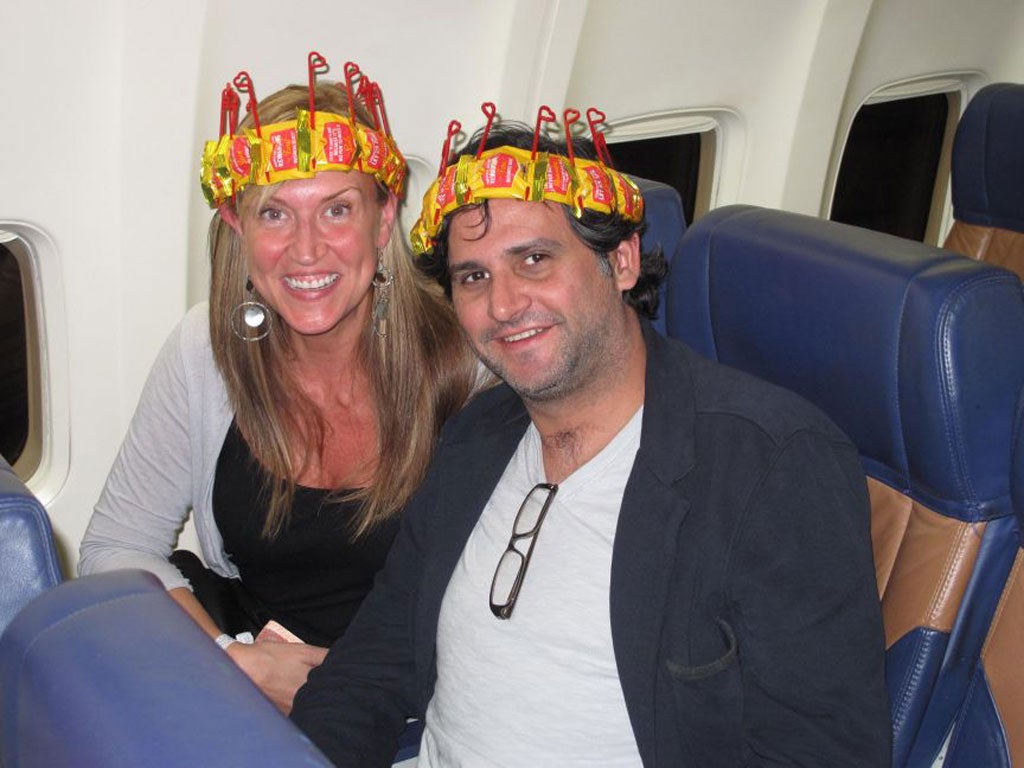Simon Calder: Young and in love? Fly the airline that lives at Love Field
The man who pays his way

Jennifer and Ryan struck lucky on the flightpath to Las Vegas. Not only were they soon to be wed, they also flew on Southwest. This is a budget airline that loves its passengers, especially when they are in love, and whose HQ is located at Love Field, Dallas.
Click HERE to read "48 Hours in ... Houston", the first time we have covered the largest city in Texas. I researched the feature (and made a film, at independent.co.uk/DiscoverAmerica) as part of a longer tour of the US during which I took three domestic flights – and rediscovered the joy that American flying can be.
Southwest Flight 1892 from New Orleans to Las Vega$ (as the Nevada city likes to be known on destination screens) was my favourite. Here's a phrase you don't often read: the fun started with the safety briefing. The lead flight attendant, also named Jennifer, had a way of attracting attention without a trill on that little whistle attached to the life jacket.
"For your evacuating convenience," she began, "we have six emergency exits." After the words "place the life jacket over your head", and before "tie it securely with a double bow" she added the handy personal grooming advice: "Fix your hair." And, should the oxygen masks drop: "If you're travelling with young children, or anyone too cool to watch a safety demonstration, fit your own mask before helping them."
Once in flight, the cabin crew discovered that the couple in Row 3 were off to get married. As the plane descended towards the desert city, the flight attendant reported: "We've been plying Ryan and Jennifer with alcohol to make those nuptials seem like a good idea." She added a sentence that, again, you rarely encounter in the conventional world of aviation: "And we've made them some hats in the galley."
Full marks for improvisation. Considering the headwear had been fashioned from bags of peanuts held in place by red plastic cocktail sticks (with a heart-shaped twist at the end), they were sturdy enough coronets. "You have to wear them at least as far as baggage reclaim," Jennifer instructed as she crowned the couple and the rest of us passengers cheered.
Cleaning up in Vegas
When the wheels touched down, a bonus briefing was broadcast: "Welcome to Sin City. Please do not wager any more than you can afford to lose." And, as the aircraft reached the gate, there was none of the dull old insistence about remaining strapped in until the seat-belt light went out. Instead: "Wait for it", followed immediately by the familiar ding, and the order "OK – get out!".
The same plane was continuing on to San Francisco, along with the crew and some of the passengers. The California-bound people were told: "Don't move a muscle until the Las Vegas people have deplaned. Then you are free to stretch your legs, or help us clean the plane." Perhaps only the world's safest carrier, boasting 15 million flights and around 1.8 billion passengers carried without a single fatal accident, can make light of the deadly serious business of running an airline.
Making connections
The journey from Boston to Houston was a different experience. Rather than stump up $500 (£300) for a non-stop flight between Massachusetts and Texas, I paid just one-third as much for a connecting trip on AirTran Airways. It was formerly known as ValuJet and is soon to be assimilated into the ever-growing Southwest. Granted, checking in a bag costs an extra $20 (£12), but with a swift connection at Atlanta the overall journey was scheduled to take only 90 minutes longer than the non-stop. That, at least, was the plan. But storms over the eastern seaboard meant the flight was routed a long way west before turning south. Anyone with a laptop can watch the flight's progress online for free.
How good is the "skymap" system? Well, it constantly updates the arrival time in Atlanta, and shows the departure gates for connecting flights. Then it goes one better: you can find out not just what time you should arrive at your final destination, but also the location where you will rejoin your luggage. In my case, Houston Hobby airport, reclaim belt 3. But would it make it?
We arrived in Atlanta just 35 minutes before the last flight of the night to Houston was due to leave. Now, that corresponds to the official minimum connecting time at a small airport such as Warsaw or Vienna. Atlanta happens to be the busiest airport on the planet, with far more planes and passengers than Heathrow. The arrival gate was on a separate pier from where Flight 383 was preparing to depart for Houston.
I sprinted to the gate with a few minutes to spare. But "self-loading cargo", as passengers are known in the business, can usually make connections faster than their possessions, which need to steer a course through the world's most complex baggage system.
This AirTran flight was refreshing: the lady in an Aeropostale-branded sweatshirt, who I took to be a fellow passenger, turned out to be a stewardess. But I wasn't especially looking forward to the confirmation that my bag was not on that midnight plane from Georgia, and all the kerfuffle that would ensue.
Yet, no sooner had I walked wearily to the baggage area than the bags from Flight 383 started to appear. All of them, on reclaim belt 3.
Join our commenting forum
Join thought-provoking conversations, follow other Independent readers and see their replies
Comments